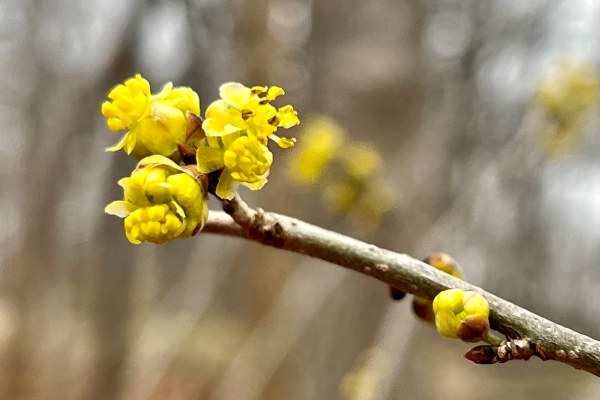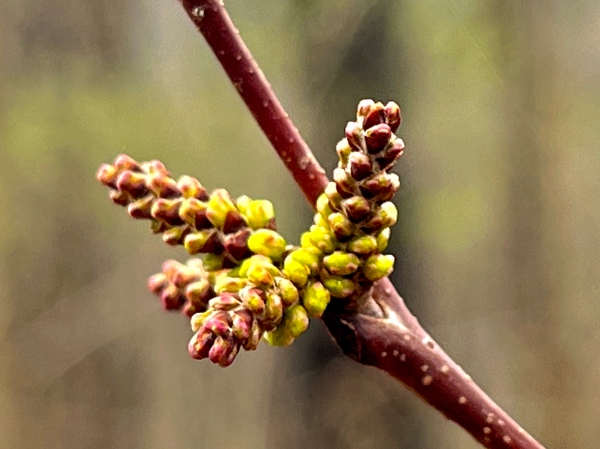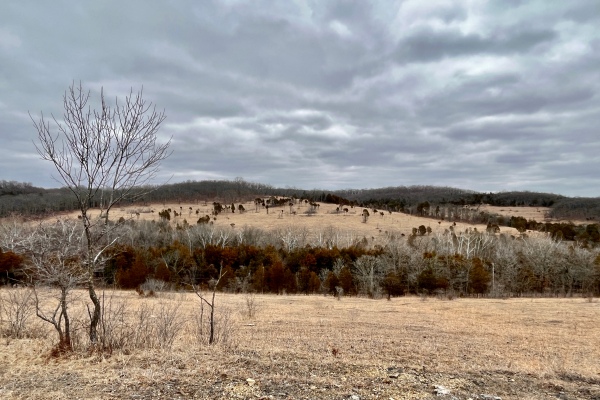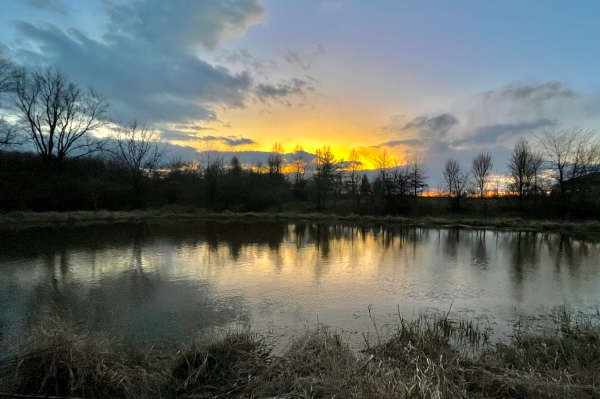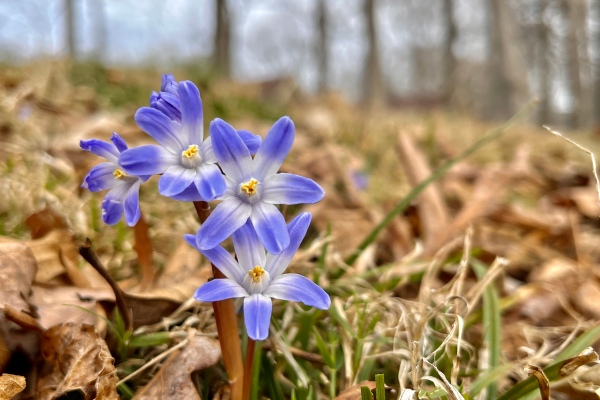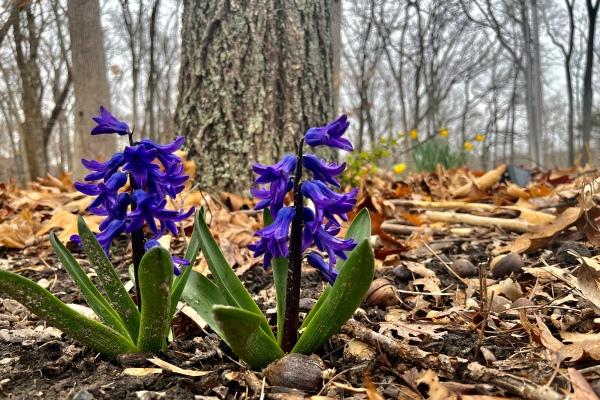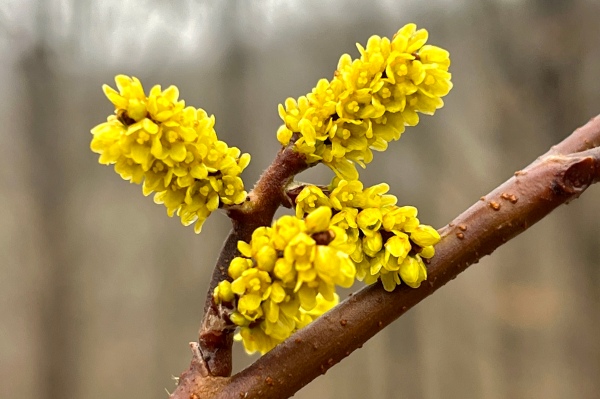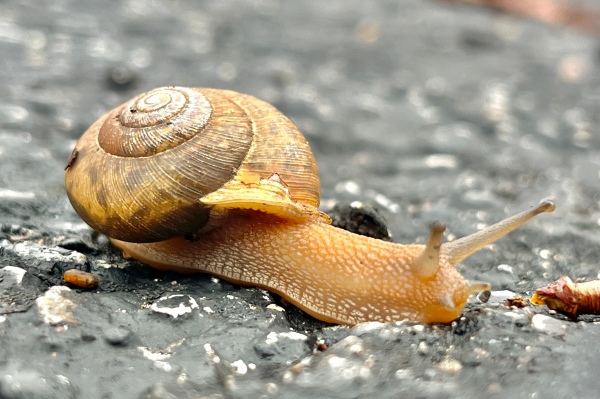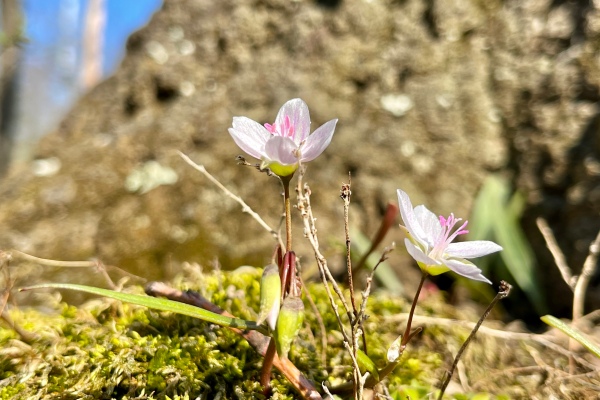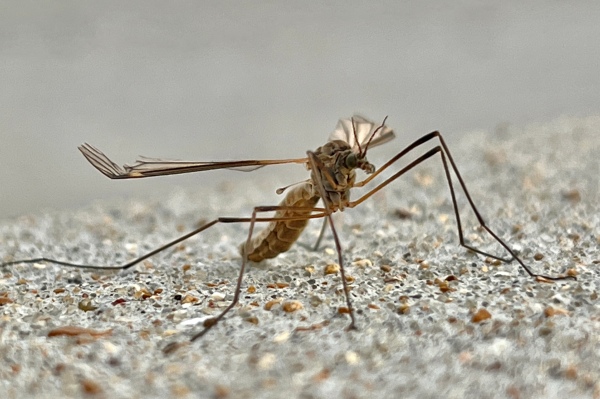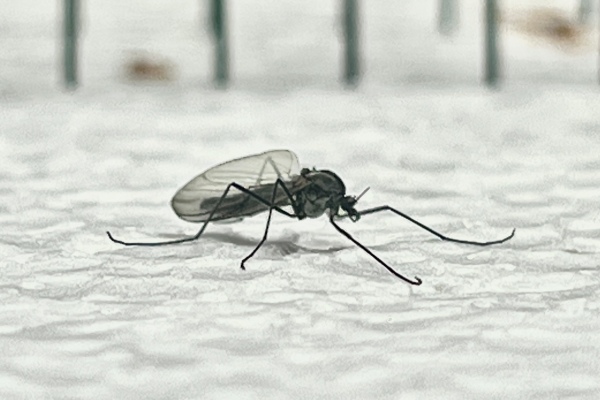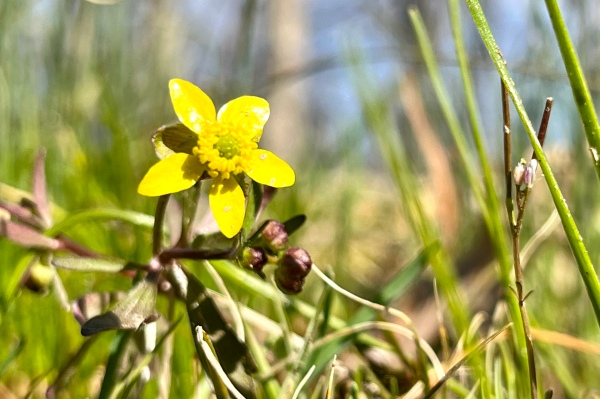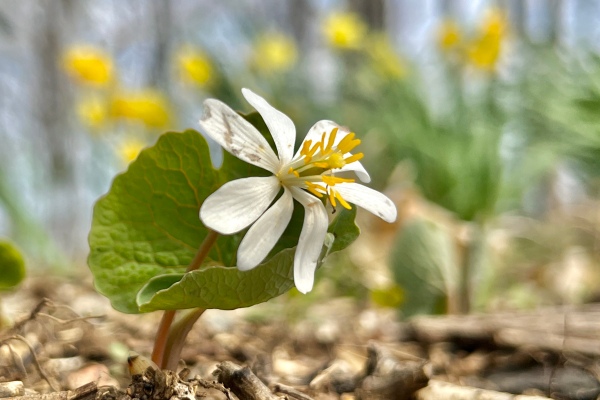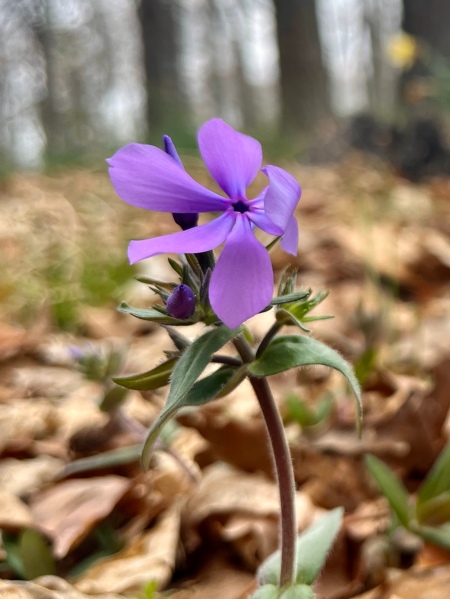April 1—Better late than never. The serviceberries (Amelanchier arborea) in my neighborhood have finally started blooming, marking the beginning of a month-long period where three charismatic native trees bloom in rapid succession (redbuds will follow shortly, followed by dogwood—the king of native flowering trees in Missouri). I normally see serviceberries begin blooming in mid- to late March, but the weather of late has been mostly coldish and cloudy. First bloom on April Fools Day is about as late as I’ve ever seen for this species.

April 2—Pussytoes. Native wildflowers are springing fourth now that sunshine and balmy temps have returned. Today’s first bloom is pussytoes (Antennaria parlinii), also called mouse ears. Both common names refer to the fuzzy nature of the plant—the first in reference to its flowers and the second to its leaves. This plant was, until recently known as Antennaria plantaginifolia (meaning “plantain-like leaves”), but Missouri populations were recently deemed sufficiently distinct to warrant splitting from populations further west as a separate species. I always see these plants growing in dry(ish) upland forests, but always in a more exposed situation on rocky or sloping ground where they receive more sunshine and less moisture than typically found deeper inside the forest. These plants are growing along the roadside in a small rise in my neighborhood.

April 3—Mexican plum. On yesterday’s WGNSS Botany Group outing, we observed the spectacular blossoms of American plum (Prunus americana). There is, however, a very closely related species of wild plum in the state called Mexican plum (Prunus mexicana). The two species, both members of the rose family (Rosaceae), have identical blossoms and flower at exactly the same time, making them quite difficult to distinguish from each other. One character that can be used fairly reliably though is their growth habit. Mexican plum is usually more treelike, with isolated plants well separated from their nearest neighbors, while American plum tends to be shrubbier in form and forming clonal colonies with many individual plants densely occupying an area. There are several small trees along the road in my neighborhood, all of which exploded into full bloom starting yesterday, that I take to be Mexican plum owing to this individual treelike form of growth. The flowers of both species are highly attractive to pollinating insects, so I will be checking them closely over the next week while they are in bloom to see what insects I might be able to find upon them.

April 5—Today’s first blooms: sassafras and sugar maple. It’s been a rapid fire sequence of blooms since warm temps returned a few days ago. Today’s first blooms include two native trees—one known for its spring flowers (sassafras), and another one not (sugar maple). Sassafras (Sassafras albidum) flowers aren’t as showy as those of other spring flowering trees—their yellow-green color just can’t compete with the delicate white of serviceberry, bold white of dogwood, or vivid pink of redbud, but they offer more botanical interest than their charismatic contemporaries in that trees are usually dioecious—i.e., trees usually have either male flowers only or female flowers only rather than both (a condition known as monoecious) or, more commonly, flowers with both male and female parts (also monoecious, but with “perfect” flowers). Flowers on both male and female trees have 5–6 “tepals” (i.e., petals plus petal-like sepals); however, male flowers have nine stamens (the male part of the flower) and a non-functional style (female part), while female flowers have only six non-functional stamens (i.e., “staminodes”) around the central style.


Sugar maple (Acer saccharum) is not usually thought of as a “flowering” tree, but like all other broadleaf plants it possesses true flowers that produce seeds for reproduction. The flowers also appear in early spring on long stalks in drooping clusters. However, unlike sassafras, sugar maple can be either monoecious or dioecious, and in the latter case the flowers can be either imperfect or perfect. In other words, any given tree may have only male flowers or only female flowers (dioecious), or it may have both male flowers and female flowers (monoecious imperfect), or it may have flowers with both male and female parts (monoecious perfect).

April 7—Woodland phlox. Now blooming in my woodland garden is woodland phlox (Phlox divaricata). This common spring wildflower is also sometimes called sweet William and blue phlox, but the flowers are more blue-purple than blue and can even be pink or white (plus, I don’t have the foggiest idea who “William” is!). The species epithet divaricata means “widely diverging” and refers to the more widely separated flowers compared to the usually tight clusters of flowers found in other species in the genus. There are a number of additional species in the genus in Missouri, but most of them have a restricted range in Missouri (usually restricted to parts of southern Missouri) or are found in non-woodland habitats. Phlox flowers are some of the most fragrant of our native wildflowers.

April 10—Brown stink bug. The most appropriately named insect in the world!

April 12—Violet wood-sorrel. Today’s native wildflower is violet wood-sorrel (Oxalis violacea). Many people know this plant due to the pleasantly tart flavor of the leaves and fruits when eaten. The taste is due to the presence of oxalic acid in the plant’s tissues, although it can be toxic if consumed in large quantity due to the formation of calcium oxalate crystals in the kidneys. In fact, the genus name derives from the Greek oxys meaning “sharp,” referring to the sharply sour taste of the leaves.

April 12—Bridge of spiders. The Boone Bridge spiders have returned. Best I can tell they are orb weavers in the genus Larinoides (a.k.a. furrow spiders). Like most orb weavers, these spiders build a new web each night and consume it the next morning, then start all over again the next evening. Males can be distinguished by their enlarged pedipalps.


April 15—“Hey, Iris… what is the definition of dyslexia?” Not sure why she won’t answer—-maybe my iPhone is broken!

April 16—Virginia bluebells. One of my favorite native wildflowers is Virginia bluebells (Mertensia virginica). There is but a single specimen of this fantastic species in the woodland gardens around my home, but it blooms reliably every spring showy as ever. Virginia bluebells are normally found in bottomland forests in rich soil along creek beds, so I suspect this lone individual might have been planted by a previous owner. I thank them if they did.

April 18—Dogs in bloom. Our most iconic native flowering tree may well be flowering dogwood (Cornus florida). Its white showy blossoms not only grace the forests of southern Missouri, but also neighborhoods and gardens throughout the state. An interesting “factoid” about this species is that the large white “flower” is not a flower at all, but rather an inflorescence composed of many individual flowers (called “florets”) that, together, form the central yellow disc of the “flower.” The four white “petals” surrounding each inflorescence also are not true petals or even parts of flowers that can sometimes look like petals, but rather are modified leaves called “bracts” that serve the functional purpose of petals (i.e., attracting insects to the flowers for pollination). In the photo, you can see some of the individual florets are open, revealing four male stamens surrounding a central female pistil, while other florets are still closed. The florets do not actually begin opening until after the white bracts surrounding the inflorescence have opened. Thus, for a time when the bracts first open, the tree looks like it is in flower but technically is not yet. (Pull that up in dinner conversation sometime. You’re welcome.)

©️ Ted C. MacRae 2023
